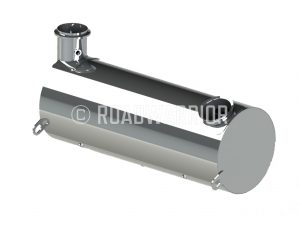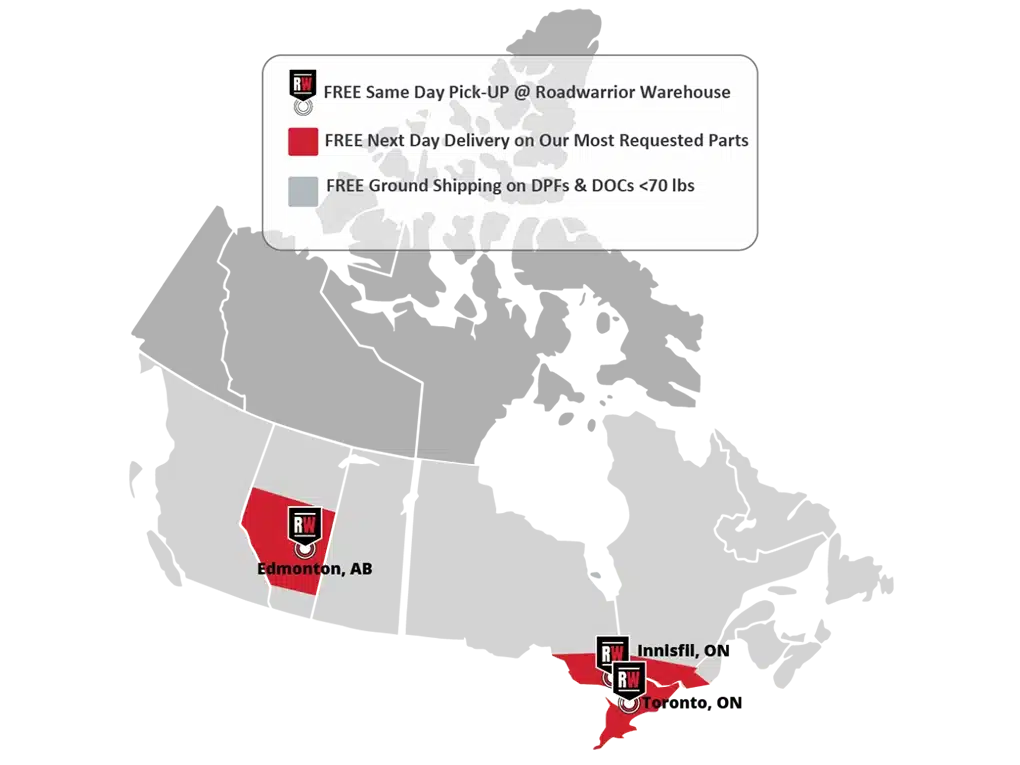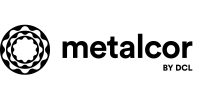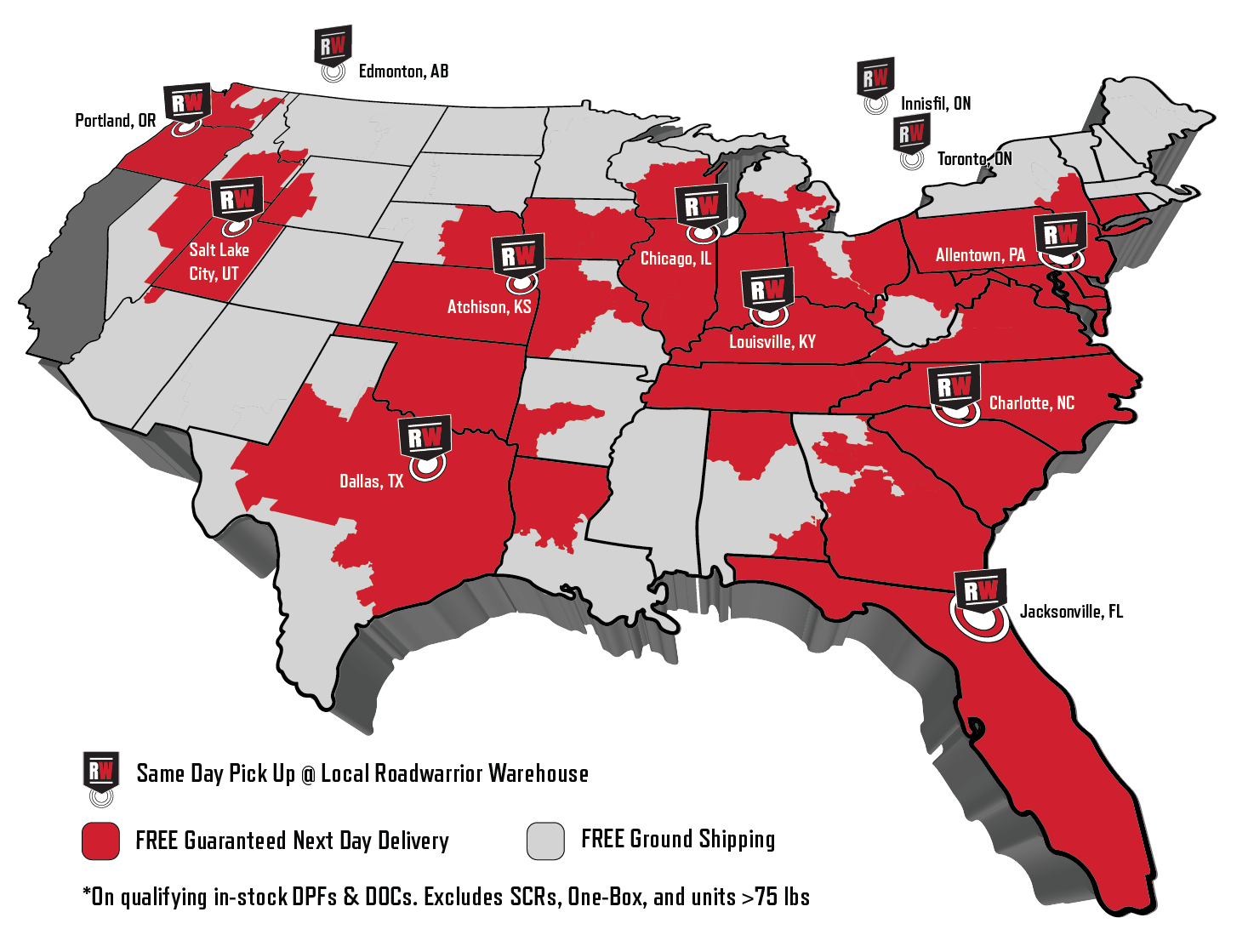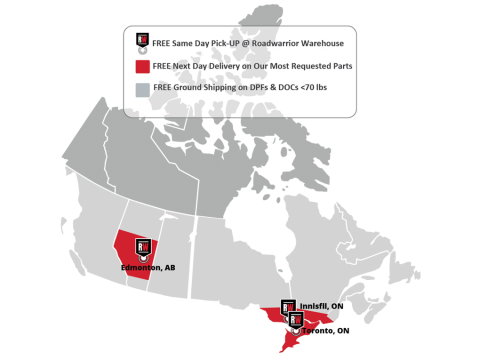In two years as the only aftermarket replacement One-Box manufacturer, the Roadwarrior R&D team has developed our expertise considerably. We’ve expanded Roadwarrior’s design offering to include not one, but four different One-Box models. Recently, we also achieved the challenging technical feat of developing a modular One-Box. The compact, modular One-Box is one system combining a DPF, DOC and SCR; the system can be split into three parts and serviced individually.
‘…The modular One-Box can be split into 3 parts and serviced individually…’
The biggest drawback of current OEM One-Box models is that if one section breaks, you often have to replace the whole system. This is an expensive and time-consuming repair to your heavy-duty engine, that can cause costly downtime and services. A modular One-Box makes future repairs faster and a third of the price, getting you back on the road and back on track.
Why Choose a Modular One-Box?
The modular One-Box design has the advantages of our classic Roadwarrior One-Box—the light, compact design freeing up valuable frame-rail space, improved fuel efficiency and lower engine backpressure. Our One-Box design also solves the issue of low NOx conversion efficiency in GHG14 generation OEM One-Boxes. This is a common issue that occurs when DEF builds up in the SCR mixing chamber.
But our modular design comes with other advantages. Over time DPFs experience ash buildup, and it eventually becomes necessary to remove and clean your DPF. The modular design could make this process quicker and easier for your mechanic and for you. This valuable part also increases your truck’s resale value, even if you just sell it for parts.
A One-Box emissions control system is a complicated system. You might think it’s just an added expense and an extra warning light on your dashboard. But from a legal and environmental perspective, an aftertreatment system is essential to your heavy-duty diesel engine. A well-maintained aftertreatment system also benefits your truck.
So, what is an exhaust aftertreatment system and what does it do?
What is a Diesel Oxidation Catalyst (DOC)?
A Diesel Oxidation Catalyst is a honeycomb-structured filter, coated with a catalyst, specially designed to treat exhaust gas. As the exhaust gas passes through, the catalytic converter reacts with hydrocarbons and carbon monoxide to create carbon dioxide and water. At Roadwarrior, our emissions control technology features award-winning Metalcor® technology, improving fuel efficiency and conversion rates. Our Metalcor® DOCs are more durable and more efficient than traditional ceramic catalysts.
What is a Diesel Particulate Filter (DPF)?
After the DOC, the exhaust gas goes through the Diesel Particulate Filter (DPF). The DPF traps soot and particulate matter, which are then burned off by active or passive regeneration (regens). Roadwarrior DPFs use a catalytic coating made from platinum-grade metals. This benefits you because passive regens can happen at lower temperatures. This means that you get longer between active regens, and ultimately enjoy fuel savings.
Regular regens are important because if soot and ash build up, they can clog the DPF. Eventually, this will cause DPF cracking and if that happens you may need to replace the DPF early. We recommend a professional DPF clean after about 200,000 miles to remove accumulated ash and extend its life.
What is Selective Catalytic Reduction (SCR)?
Selective Catalytic Reduction (SCR) is the final stage of the exhaust aftertreatment process. The diesel exhaust fluid injector releases DEF (automotive-grade urea) into the exhaust stream after the DPF. The DEF passes through the SCR and this third catalyst filters the exhaust gas even more. The SCR turns NOx particles into nitrogen and water, which both occur naturally in the air. This three-part system ensures that your diesel engine is both environmentally friendly and compliant with the latest EPA regulations.




